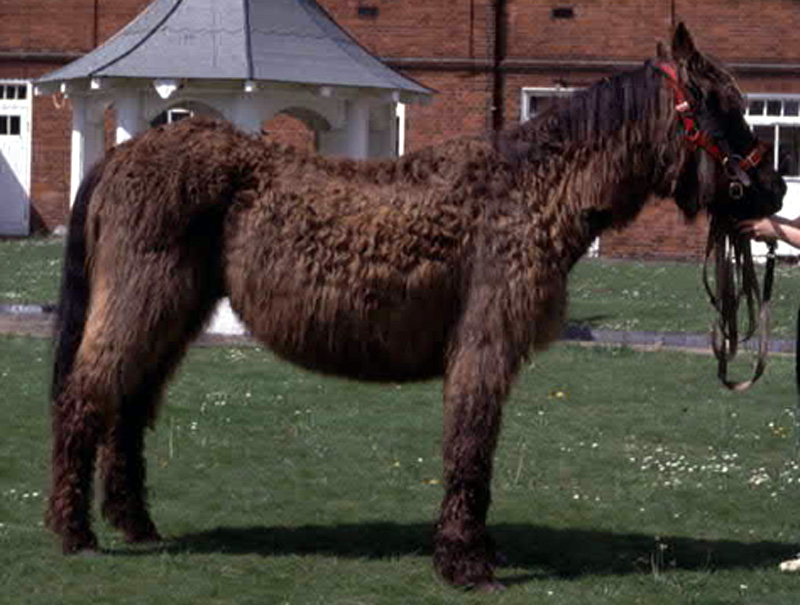
As a dog owner, you always keep a tab of your pet’s behavior and changes to figure out what is going on, especially when it comes to blind dogs. Waking up to find your blind dog walking in circles ceaselessly can be quite startling, but there is no reason to panic.
One of the most commonly reported dog behaviors concerning owners is walking in circles. While this is completely normal for most pets before lying down, urinating, or defecating, it can sometimes be a sign of an underlying health condition.

Blind Dog Walking In Circles? Here’s What It Could Mean
It is common for a blind dog to circle a few times before sitting down or peeing to be comfortable. However, if you notice a different kind of walking in circles than previously noticed, it can indicate something serious.
Such a behavior can be easily identified as the pet is seen circling in the same direction all the time. Moreover, you may not be able to stop the circling or change the direction. Circling behavior also tends to get worse with time and is often accompanied by other symptoms like:
- interacting abnormally
- aimless wandering
- staring constantly at one spot.
Video clearly shows what you have to look out for.
If a blind dog that has adapted well to its lost vision suddenly starts walking in circles, it can be an indication that something is going around with it. One of the most common reasons blind dogs walk in circles around you is pain or anxiety. This can be confirmed by looking at other signs of pain like growling, hiding, aggression, and fast breathing.
You can take your pup to a vet to figure out the reason for the pain and suggest proper treatment. Sometimes, your pet can suffer from separation anxiety or stress brought by boredom. You can try stimulating it physically and mentally by adding an extra walk to its routine, introducing training exercises and playtime to keep it active and excited.
Old Dog Walking In Circles For Hours?
A circling behavior in an old dog can indicate a variety of underlying issues, the most common being Vestibular Syndrome, Neurological Disorder, and Canine Dementia. While it is common for elderly dogs to show abnormal behaviors like walking in circles, you should be concerned if you notice your pet exhibits such a movement for hours.
Let us see how you can diagnose the underlying condition for the dog’s behavior and how you can go about treating it.
Canine Dementia
Dogs see a gradual decline in their cognitive function as they age. Canine cognitive dysfunction results in loss of memory and forgetting learned behavior. Such dogs can be seen irritable, disoriented, and prone to house soiling and show changes in their sleep patterns.
Circling behavior can be a result of a feeling of disorientation as they forget important things about their lives. While there are no medications to treat dementia, supplements and stimulation can help slow down its progression
Vestibular Syndrome
This condition affecting the balance and the inner ear is more prevalent in senior dogs. It occurs due to damage caused by injury or infection but can also be a result of nutritional deficiency in older canines.

A dog suffering from vestibular syndrome is likely to show symptoms like excessive drooling, falling down, or walking with a tilted head. It is much like a stroke and should be reported to a vet for timely diagnosis and treatment.
Cushing’s Disease
If an old dog suddenly starts walking in repeated circles, it might be affected by Cushing’s disease caused due to a hormonal imbalance.
Some commonly noticed symptoms of this condition include excessive panting, reduced activity, increased thirst and appetite, and weight changes. This disease is progressive in nature and the treatment options are still in their experimental stages.
Dog Walking In Circles With Head Tilt?
When your pet walks in circles with a tilted head, it is possible that something is not right with its ears or brain.
There are several conditions that can trigger such behavior in dogs; it is best to consult a vet to get your pet checked and diagnosed for any serious underlying health issue. Here are some reasons your pup may walk in circles with a head tilt.
Inner Ear Infection
One of the most common reasons for a dog walking in circles is an ear infection and it requires immediate treatment as it is serious enough to result in such behavior.
An infection of the inner ear generally gets accompanied by other symptoms like:
- head shaking
- unpleasant smell coming from the ears
- redness around the ear area
Consult your vet who would prescribe medication for relief and perform a deep cleaning of the ear. Make sure you clean your pet’s ears regularly to prevent them from developing an ear infection.
Neurological Disorder
Ailments like tumors and head injuries as well as neurological diseases can also cause circling behavior in dogs. The most commonly seen neurological disorders in aging pups include spinal diseases and seizures. Symptoms of such a condition include lack of appetite, skin changes, and fever.
These dogs are unable to change direction or stop when they are circling. Sometimes, head injuries can also affect a pet’s sense of direction and lead them to walk in circles. Such conditions can be treated with appropriate medical care.
One of the best ways to tell if walking in circles is a sign of something serious is to try distracting the pup when it circles and get it moving in some other direction. If it responds positively, the problem is probably not neurological. If your pet is unable to control the movement, you should plan a visit to the vet to report other symptoms and diagnose the condition to get it treated on time.
Diets & Nutritional Supplements
Usually, these diseases and symptoms are a natural result of aging in dogs, and most of them have no medical solutions available just yet.
The only thing you can do is try to extend your dog’s lifespan by a few months while enhancing its quality of life with the help of diets and nutritional supplements.
To stave off dementia and other cognitive disorders, you can make sure your pup gets regular exercise, and brain-stimulating activities, apart from that, you can try nutritional supplements such as Dr. Bill’s Canine Cognitive Support.
For slowing aging, which is key cause behind most such disorders, you can try supplements such as The Ninth Life, along with a diet that is rich in Omega 3 fatty acids for optimum results.
Final Thoughts
Any pet owner would be concerned to see their furry friend showing an unwanted behavior like walking in circles. It can sometimes be normal and might indicate something more serious at some other times.
Reasons can range from behavioral disorders and neurological problems to ear infections and cognitive decline. It is best to visit a vet to diagnose the issue at the earliest so that your pet can return to its peaceful state and stay away from any serious health implications.
When To Euthanize A Horse With Cushing’s Disease? UPDATED 2022 #2
Knowing when to euthanize horses can be a …
When To Euthanize A Horse With Cushing’s Disease? UPDATED 2022
Knowing when to euthanize horses can be a …
Feeding Alfalfa Pellets Instead of Grain – A Complete Guide
Horse owners have different opinions when it comes …
L Glutamine For Dogs – UPDATED 2022 – A Complete Guide
Digestive problems are quite common in dogs and …
L Glutamine For Dogs – UPDATED 2022 – A Complete Guide
Digestive problems are quite common in dogs and …
Blind Dog Walking In Circles? UPDATED 2022 – A Complete Guide
As a dog owner, you always keep a …
Laryngeal Paralysis In Dogs – When To Euthanize?
The toughest decision for a pet owner is …
Natural Treatment For Anaplasmosis In Dogs – UPDATED 2022
Spotting a tick on your pup is quite …
Does My Dog Have Dementia? – Quiz & Canine Dementia Scale
Dogs have so many resemblances with humans; one …
PLN In Dogs – A Complete Guide To Protein Losing Nephropathy In Dogs
Just like humans, dogs suffer from damage and …







